Product Launch | The Self-Driving Practical Training Lab provides a practical training platform for universities
With the transformation of the automotive industry, autonomous driving has become a new direction. In this context, Neusoft Education Technology Group Co. Limited (“Neuedu” or “the Group”) actively responds to industrial changes. Relying on Neusoft Reach's self-driving industry background, Neuedu develops a self-driving practical training lab which could help universities to quickly build practical courses in artificial intelligence, and solves difficulties such as insufficient of teaching staff, courses, and equipment.
Technical Background
There are four key issues that need to be addressed for self-driving, including: Where am I? What is around me? What will happen next? What should I do? These four issues seem like vehicle-side problems, but the technology behind is extremely complex. The related technologies include environment sensing, signal processing, intelligent decision making, system control and the incorporation of artificial intelligence. To address any of these issues well requires long-term accumulation in the academic community and strong engineering capabilities.
Self-driving, as a major application direction of AI, cannot be achieved by a single technology. It is an integration and innovation of the current pinnacle of human technology, requiring algorithmic innovation, system integration, and the support of cloud platform.
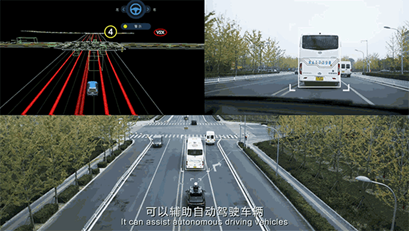
Where am I ?
Positioning is the first problem that self-driving vehicles need to solve. Only by sensing their own location can they take the optimal route to the destination. Positioning relies on mapping technology, which describes all the static environments that the vehicle needs to traverse, including lane lines, pedestrian crossings, and signs. These traffic signs can also serve as an anchor for positioning calibration. Knowing the coordinates of the traffic signs in the map is significant to determine the position and orientation of the vehicle in the map coordinate system.
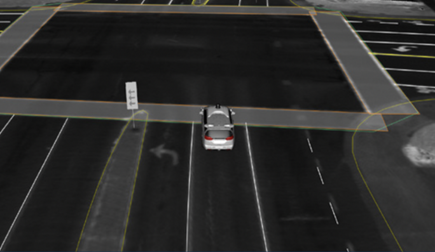
What is around me?
After positioning, the perception system of the self-driving vehicle will use sensors and AI algorithms to identify the position, size, status, and category of the surrounding obstacles. LIDAR, cameras, and Radar are the main sensors used to perceive surrounding obstacles, and each of them has different advantages in different environments. Just like a human driver observes and recognizes the surrounding environment through the eyes, the self-driving vehicle uses multiple sensors for perception. The self-driving vehicles will use their multiple sensors and computing efficiency to achieve far beyond human levels, such as accurately identifying objects behind the vehicle, simultaneously observing the status of vehicles on both sides, and accurately identifying objects using LIDAR even in the darkness.
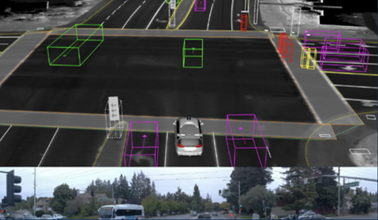
What will happen next?
After the self-driving vehicle recognizes the surrounding objects, it also needs to predict the trajectories of these objects as much as possible, including behavior prediction and speed prediction. For example, whether the car is turning left or going straight, whether the car will run a red light, and what is the speed when it enters the traffic flow. All of these information are essential for the self-driving vehicle to determine what to do next and how to avoid dangerous collisions.
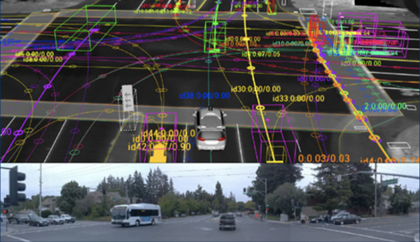
What should I do?
The last step is to choose a suitable road based on the above information. Just like the human driver is responsible for the final behavior of the vehicle, the self-driving vehicle chooses the most suitable way to reach the destination. This requires consideration of factors such as driving regularization, safety, and convenience. The self-driving vehicle uses various algorithms such as optimization algorithm, search algorithm, and Monte Carlo tree sampling (MCTS) to obtain a suitable driving behavior, and can also improve driving performance by imitating the driving behavior of experienced drivers.
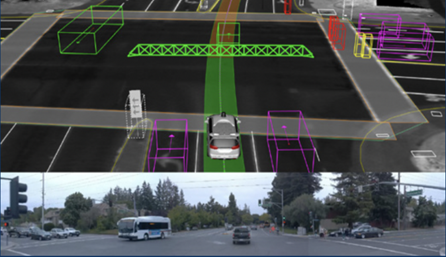
The Self-Driving Practical Training Lab

• The self-driving car, which integrates with AI algorithms, LIDAR SLAM technology, decision-making control, and path planning, could drive automatically on the platform. Besides, the program could be deployed on the Nvidia Jetson TX1 edge computing platform.
• The project includes 5 primary projects and 55 practical tasks, involving 11 related courses.
• The Lab combines AI and autonomous driving technologies to improve the understanding of professional knowledge and engineering practical skills.
• The practical projects are detailed and concise, which simplifies the theory and emphasizes on AI practical skill training.
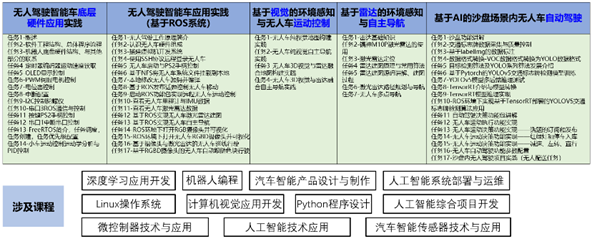
The Main Modules of the Self-Driving Practical Training Lab

Vision-based self-driving project includes the complete development process of visual perception, covering all AI visual processing operations.
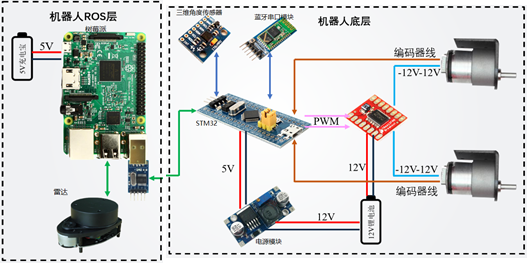
2. Practice in the Application of the Self-Driving Intelligent Vehicle
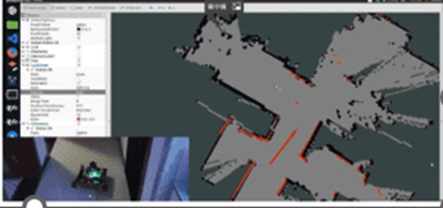
3. Environment Perception and Motion Control of the Self-Driving Intelligent Vehicle Based on Vision
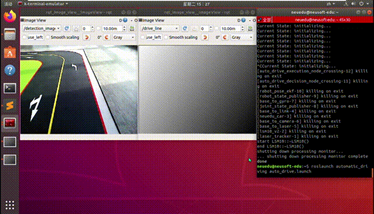
4. Environment Perception and Autonomous Navigation Based on Radar
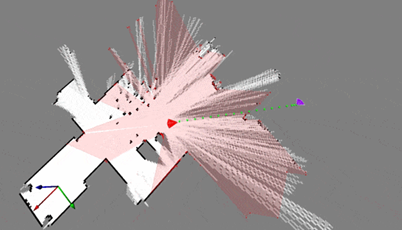
5. Autonomous Driving of Self-Driving Intelligent Vehicles on the Platform Based on AI

As a leading education service provider of digital talents in China, Neuedu leverages Neusoft’s strong industrial advantages and rich educational experience to digitize, productize, and platformize advanced educational concepts, methods, models, systems, and standards verified by the three universities through practice. Based on continuous application, feedback, and iterative upgrading, it provides solutions such as professional co-construction with industry colleges, smart education platforms and teaching content, and laboratory solutions for experimental training. Through the open production-education integration base - Neuedu Apprenticeship Programme Training Base, it has built a 4S product and service system covering platforms (PaaS), software (SaaS), content (CaaS), and data (DaaS), providing top-notch education products and services to many undergraduate and vocational colleges, empowering cooperative colleges' education reform and innovation.
The Self-Driving Practical Training Lab released this time belongs to the PaaS (Platform as a Service). Neuedu has built a platform covering professional computility overall configuration, self-developed experimental training lab and practice platform deployment, and provides a "smart education platform" that meets the needs of professional teaching management and operation based on resource management and data management as a supporting platform. Among them, the training lab focuses on carrying various core project resources of each major at all levels, and provides a comprehensive one-stop solution for professional practical training in cooperation with physical environment and related hardware and software equipment.
Contact Us
Contact: Teacher Zhong
Tel: 13478615921
Email:zhongzhihua@newedu.com
相关文章
- Inheritance, Innovation and Transcendence | Neusoft Education Technology Group 2023 Award Ceremony Was Successfully Held
- Inheritance, Innovation and Transcendence | President WEN Tao Delivers 2024 New Year Address
- Dream on the road, with this audio-visual feast igniting a new 2024!
- Neusoft Education Technology Group was Selected into the “2023 Typical Cases of Brand Credit Construction” by Xinhua News Agency
- Neuedu was invited to participate in the fifth China IT Education Boao Forum in 2023








 辽公网安备 21029602000700号
辽公网安备 21029602000700号